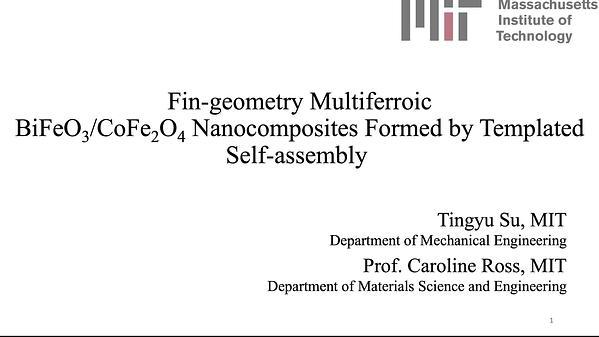Would you like to see your presentation here, made available to a global audience of researchers?
Add your own presentation or have us affordably record your next conference.
Energy-efficient spintronic memories and oscillators require a large spin-orbit torque (SOT) and low effective damping for exciting magnetic precession. Conventional
SOT-driven bilayers, consisting of a heavy metal and an ultrathin ferromagnet (e.g., ~1 nm), suffer from high damping due to interfacial spin pumping and scattering. Recently, SOTs have
been reported in thicker (~10 nm) single-layer ferromagnetic films with vertical compositional gradients 1-3. We hypothesize that thick vertically graded ferromagnets can also enable
low damping, potentially coexisting with substantial SOTs. Here, we examine the impact of intentional compositional gradients on damping and SOTs, specifically in graded films
consisting of two ferromagnetic elements: Fe with low intrinsic damping 4 and Ni with sizable spin-orbit coupling 5. We grew 10-nm-thick graded and homogeneous Fe-Ni films by continuously tuning the sputtering powers on Fe and Ni sources Fig. 1(a-c). The targeted vertical compositional and
magnetic gradients are confirmed and quantified by polarized neutron reflectometry. In-plane broadband ferromagnetic resonance (FMR) Fig. 1(d) points to low ef ective damping
parameters of ≈0.0045 for the graded films, comparable to ≈0.0038 for the homogenous film. Out-of-plane FMR Fig. 1(e) reveals intrinsic damping parameters of ≈0.0032 for both the
graded and homogenous Fe-Ni films. These FMR results indicate that low damping is maintained despite the steep, intentional vertical inhomogeneity. From spin-torque FMR
measurements on a graded sample, we detect a modest (at most ≈2%) linear change in the FMR linewidth with a DC current density of 1×1011 A/m2
Fig. 2, suggesting a small dampinglike SOT. Our findings constitute a step toward understanding and engineering low-damping single-layer ferromagnetic films for SOT-driven applications.
References
1 Liu, L., Yu, J., Gonzalez-Hernandez, R., Phys Rev. B., Vol. 101, p. 220402 (2020)
2 Tang, M., Shen, K., Xu, S., Advanced Materials, Vol. 32, p. 2002607 (2020)
3 Zhu, L., Ralph, D. C., & Buhrman, R. A. Advanced Functional Materials p. 2103898 (2021)
4 Wu, S., Smith, D.A., Nakarmi, P., et. al., Phys Rev. B., Vol, 105, p. 174408 (2022)
5 Du, C., Wang, H., Yang, F., et. al., Phys Rev. B., Vol. 90, p. 140407 (2014)

Fig. 1: (a,b) Schematics of (a) FeNi graded, (b) NiFe graded, and (c) FeNi homogeneous films. (d,e) Frequency dependence of (d) in-plane and (e) out-of-plane FMR linewidth for homogeneous and graded Fe-Ni films.

Fig. 2: DC bias current dependence of spin-torque FMR linewidth for 10-μm-wide graded NiFe strip at 7 GHz, magnetized at in-plane angle (a) 50o and (b) 230o
